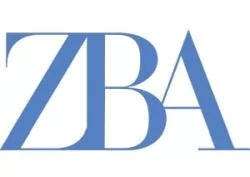Introduction
The newly passed Major Port Authorities Act 2021 ("New Act") attempts to unshackle and empower government owned major ports ("Major Port") from excessive interference and control by the central government.
The main impediment to the commercial functioning of government owed ports under the Major Port Trusts Act, 1963 ("Old Act"), was regulatory oversight by the Tariff Authority of India (TAMP). TAMP was statutorily empowered to regulate rates and charges levied by government ports, resulting in government-controlled ports being subject to price control- whilst permitting its nimbler private competitors to fix and charge market rates. The impetus for this change was driven primarily by the gradual but consistent erosion of traffic and market share of government-controlled ports. The success of private ports is attributable to several factors, notably, higher mechanization, hence, lower manning per tonne handled and associated distractions from labour issues, and lower turnaround time for vessels. These advantages encouraged greater private sector investment with higher profitability. The New Act aims to revitalize government-controlled ports by revamping their management, granting greater autonomy in financial and commercial matters and boosting investor confidence by making available new avenues for raising capital.
Managerial and Operational Developments
Board of Major Port Authority
The New Act retains the board of trustees under the Old Act, which is the decision-making body for every Major Port. This is now renamed as Board of Major Port Authority ("Board"). The number of members in each Board has been reduced from 17 to 19 members to 11 to 13 members under the New Act1. One of the drawbacks under the Old Act was the mandatory inclusion of nominees of the Central Government, Railways, Customs, Port Employees, that represented multiple interests, who were distant economic stakeholders, making it difficult to reach a consensus. That unfortunate feature is retained by the New Act. However, the Board is statutorily empowered with greater autonomy in management and taking financial and commercial decisions akin to a private organization. This includes fixation of the scale of rates and all fees charged by the Major Port, awarding tenders and contracts and raising finance.
Scale of Rates and Tenders
The Board is now vested with the authority to frame its own scale of rates in accordance with market conditions, unlike the Old Act, which had to be approved by the TAMP in accordance with various regulations issued by it.2 In the case of public-private partnership projects, the concessionaire is authorized to fix the scale of rates.3 The Board can lease or auction any asset belonging to it by inviting tenders at a rate higher than the scale of rates fixed by it.4 The Board can now allow private players to manage, operate and perform the function of ports thereby creating a healthy and competitive ecosystem for the efficient and economical management of the Major Ports. Lengthy procedures under the Old Act, where a set formula was applied for fixing the scale of rates which in turn was subject to the scrutiny and approval of TAMP, has been discontinued. The Board is now empowered to contract with private companies for the construction of wharf, docks, jetties and buildings within the port limits.5
These legislative changes are intended to make Major Ports more competitive since they can- (i) offer their services at a price that is determined by the market forces; (ii) delegate the day-to-day operations of the port to private players and even award long leases to private companies to manage and run the port, thereby promoting competition and efficiency. The New Act paves the way for a system where government's role is that of a facilitator and basic infrastructure creator as opposed to that of an operator. Government acquires land and creates the basic infrastructure of the ports, whilst the private sector operates the facilities efficiently.
Whilst these are positive developments, the New Act, confusingly, also provides that fixation of the scale of rates should not be inconsistent with the directions and rules made by the central government.6 This leaves the door open to central government interference with tariffs and runs the risk of the New Act reverting to the status quo.
It is worth emphasizing that the New Act whilst managerially and financially empowering Major Ports, makes no change in government ownership. Major Ports continue to remain an agency or organ of the government, subjecting their actions to judicial review. The structural nature of Major Ports would (in principle) make their decisions on commercial matters open to judicial review. For instance, it would not be inconceivable for users to petition the court if tariffs were exorbitant or arrived at in an arbitrary manner.7
Financial Developments
The New Act allows the Board to raise loans from scheduled banks and financial institutions in India as well as financial institutions outside India in compliance with capital control regulations regarding external commercial borrowings.8 This is a welcome change from the Old Act, where foreign borrowings were allowed only after the approval of the central government. The Board can raise capital through issue of bonds, debentures and stock certificates as well.9 The ports can also offer their assets as collateral for raising of debt.10 Foreign currency loans raised by the Board under the New Act will have no implied sovereign guarantee for repayment. Thus, the New Act empowers the Board to raise additional capital for modernization and expansion whilst also creating a market for investment in port securities.
Adjudicatory Board
A new judicial body most likely with its headquarters in Mumbai(since TAMP is located in Mumbai) is to be constituted under the New Act, which is statutorily authorised to resolve disputes involving the Board, public-private partnership concessionaires regarding the leases, tenders, concession agreements etc.11 The adjudicatory board is conferred with the jurisdiction to entertain complaints from port users regarding the services offered by the Major Port.12 It inherits the functions of TAMP under its various guidelines, apart, from fixing the scale of rates.13
The adjudicatory board is conferred with exclusive jurisdiction to resolve the abovementioned disputes.14 The jurisdiction of civil courts is barred but does not prevent parties from entering into arbitration agreements. An appeal from the order of the adjudicatory board directly lies to the Supreme Court of India.15
Conclusion
The New Act breathes new life into the Major Ports. It cuts red tape and regulatory obstacles resulting in a level playing field for the Major Ports to compete with private ports in India. This should boost the prospects of Major Ports, which already have significant advantages such as location and superior rail and road connectivity. The Major Ports should in a post-Covid world be a beneficiary of the expected increase in trade and traffic.
As always, the last word in India will be that of the courts. It remains to be seen whether courts exercise restraint and do not in guise of judicial review sit in judgement over commercial matters and attempt to regulate tariff, as that would result in a reversion to the mean.
Footnotes
1. Section 3 of the New Act.
2. Section 27(1)(a) of the New Act.
3. Proviso to section 27(1) of the New Act.
4. Section 27(2) of the New Act.
5. Section 26(1)(f) of the New Act.
6. Proviso 2 to section 27 of the New Act.
7. Dwarkadas Marfatia and Sons vs. Board of Trustees of the Port of Bombay, AIR 1989 SC 1642; Jayantilal Dharamsi and Ors. vs. Board of Trustees of Port of Bombay, 1990 (92) BomLR 596.
8. Section 33(1) and proviso to section 33(2) of the New Act.
9. Section 33(2) of the New Act.
10. Section 38 of the New Act.
11. Section 58(1)(b) of the New Act.
12. Section 58(1)(d) of the New Act.
13. Section 58(1)(a) of the New Act.
14. Section 59 of the New Act.
15. Section 60(2) of the New Act.
The above is a generic analysis and should not be regarded as a substitute for specific advice based on the facts of a client's objectives and specific commercial agreements reached. Please do reach out to us at mail@zba.co.in for any queries.

